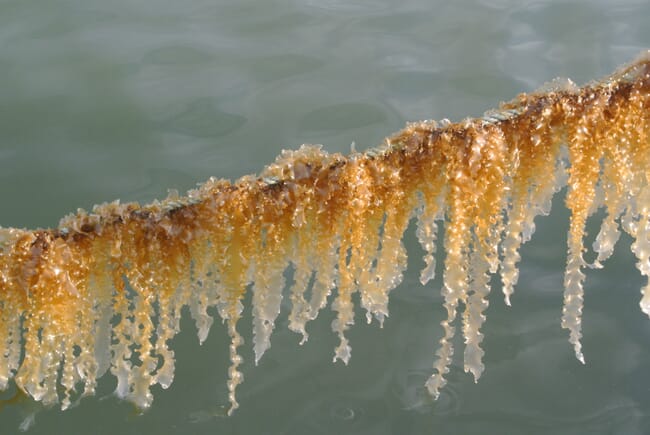A comparative study published in the Marine Pollution Bulletin has shown that commercial seaweed aquaculture yields few negative environmental effects and can significantly improve the area’s benthic quality index (BQI).

The study, carried out over two years on Sweden’s west coast, explores the environmental effects of a two-hectare sugar kelp (Saccharina latissima) farm by tracking indicators like benthic infauna, mobile macrofauna, benthic oxygen flux, dissolved nutrient concentrations and species abundance. The researchers compared these farm site indicators to four un-farmed locations in the same area – ensuring that these sites had similar environmental profiles as the farm site.
After monitoring the status of the farm site from seeding to harvest, their analysis indicates that kelp aquaculture contributes to species abundance and can improve the site’s BQI compared to un-farmed control sites. The researchers note that farming activities had no significant impact on environmental indicators like sediment oxygen update, concentration of dissolved nutrients or mobile ocean macrofauna – meaning that the negative effects of commercial cultivation are limited.
Background
Though global seaweed cultivation is dominated by China and Indonesia (representing 47.9 percent and 38.7 percent of the market respectively), more countries are expected to enter the business as global seaweed demand increases.
Countries in the temperate regions of the North Atlantic are prime candidates for expanding seaweed aquaculture operations. The coastal environment is ideal for growing commercially useful species like sugar kelp (Saccharina latissima).
Existing research indicates that kelp provides key habitats for coastal species and can act as an effective bioremediator – making a strong an environmental and commercial case for widespread cultivation.
But most of the published studies focusing on kelp aquaculture are qualitative case studies. Research that compares the environmental impacts of kelp aquaculture against controlled environments are few and far between. This makes it difficult to draw conclusions about kelp’s environmental benefits despite promising research results.
The study
To quantitatively track the impacts of a new kelp farm, the researchers used an asymmetrical before/after control impact (BACI) design. This compared the seaweed farm (the impact) to four unaffected locations (the controls) in the same area. The control locations had similar sediment profiles and coastal depths as the farm site. The researchers also ensured that the un-farmed locations were between 1.8 to 2.7 km apart. This meant that the control sites would experience the same environmental conditions as the farm site, without being affected by farm activities.
Over the farm’s two-year cultivation period, the researchers tracked environmental indicators like benthic infauna, mobile macrofauna, benthic oxygen flux, dissolved nutrient concentrations and species abundance. This was compared to data gathered at the four control locations.
Key results
Data from the experiment shows that the presence of the kelp farm didn’t impact oxygen uptake in the sediment, dissolved nutrients in the water or infauna species composition. Planting the seaweed farm was associated with increased numbers of sea urchins, brittle stars, horseshoe worms, gastropods and amphipods when compared to control locations. The researchers’ analysis finds that the farm positively enhanced the surrounding environment – contributing to species abundance and biodiversity. Control sites didn’t experience the same trend.
The researchers did note that light concentration under the seaweed farm decreased significantly during the experimental period. In the last week before harvest, light irradiance at the farm site fell by approximately 40 percent. Though this represents a key environmental effect, the researchers note that the negative impacts of under-farm shading could be alleviated by careful planning.
Conclusions
The BACI model illustrates that a two-hectare kelp farm can positively impact the coastal environment and improve the benthic quality index of the site. Key soil health indicators remained unchanged between the experimental and control sites, leading the researchers to conclude that seaweed cultivation, “does not lead to any substantial organic enrichment of the sediment”.
Though the results from this study are largely positive, the researchers are quick to note that there aren’t many long-term impact assessments of kelp aquaculture. Different cultivation methods and farm size can also have a significant bearing on how cultivation affects the surrounding environment. This gap in the research needs to be addressed before sustainable kelp aquaculture becomes a major player in the North Atlantic.


